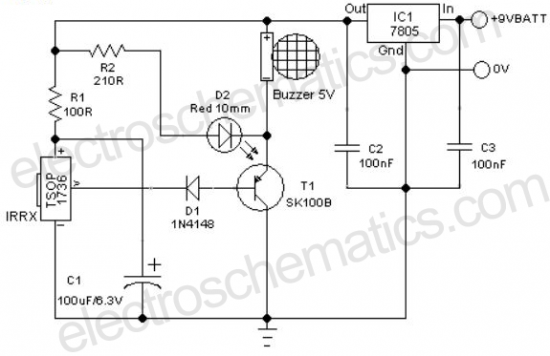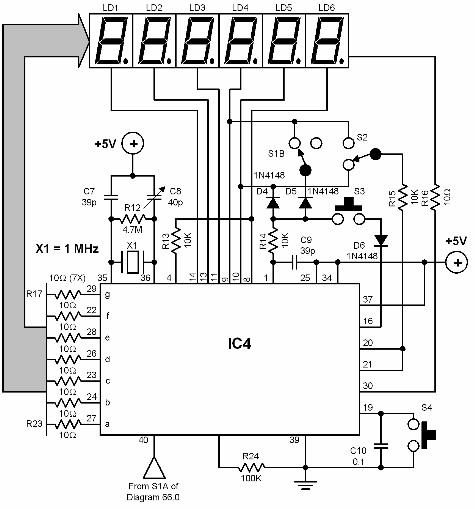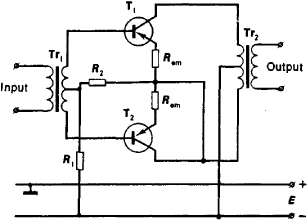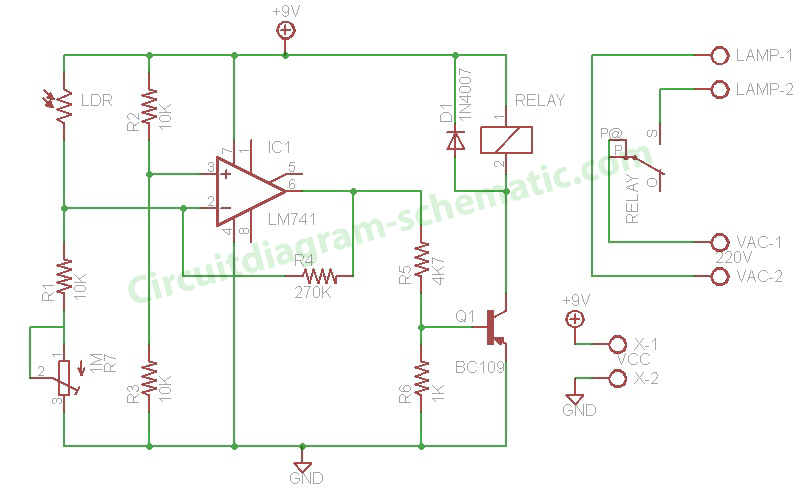
One of the positive and negative brake circuit to operate energy
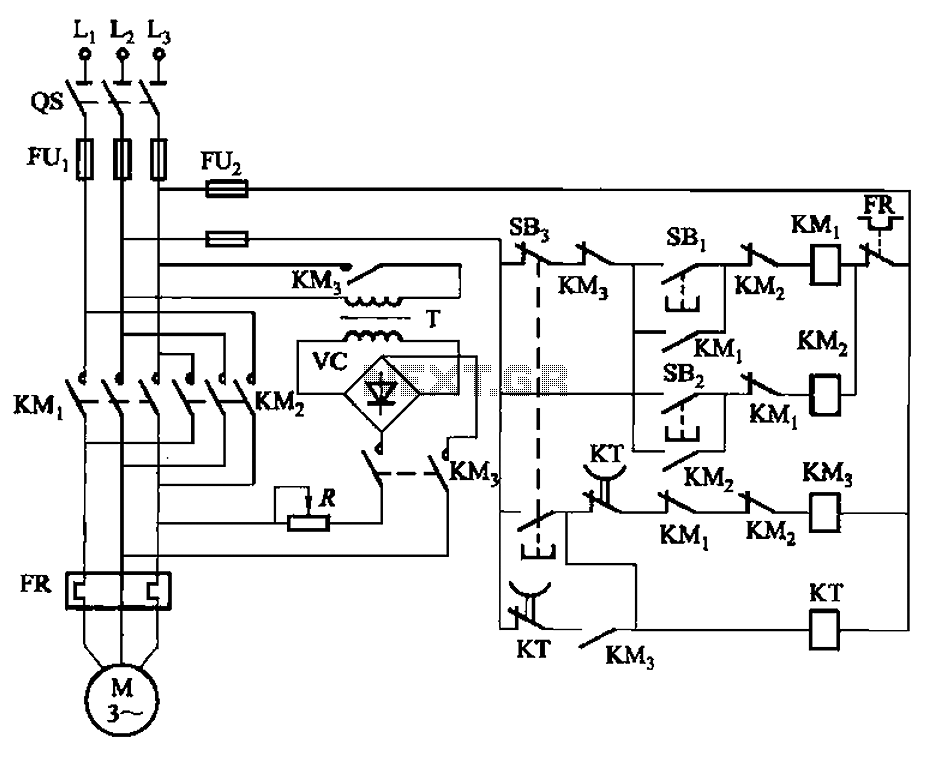
The circuit illustrated in Figure 3-144 depicts an automatic control system for dynamic braking. It utilizes a time relay (KT) to manage the operational duration, along with a step-down transformer (T) and a single-phase bridge rectifier. The circuit includes positive start (SBi) and stop (SB3) buttons, as well as reverse start (SB2) and stop buttons.
The automatic control circuit for dynamic braking is designed to enhance the efficiency and safety of electric motor operations. The time relay (KT) serves as a critical component that determines the duration of the braking action, ensuring that the motor can decelerate smoothly without causing mechanical stress or excessive wear.
The step-down transformer (T) is employed to reduce the input voltage to a level suitable for the operation of the bridge rectifier. This transformer ensures that the rectified output is compatible with the requirements of the dynamic braking system. The single-phase bridge rectifier converts the alternating current (AC) output from the transformer into direct current (DC), which is necessary for the effective operation of the braking mechanism.
The inclusion of start (SBi) and stop (SB3) buttons allows for manual control of the braking process, enabling the operator to initiate or cease braking as needed. The reverse start (SB2) and stop buttons facilitate the operation of the motor in reverse, providing flexibility in applications where reversing the motor's direction is required.
Overall, this circuit configuration ensures a reliable and efficient method for controlling dynamic braking in electric motors, contributing to improved operational performance and safety in various applications. Circuit shown in Figure 3-144. The circuit for the automatic control of dynamic braking circuit using the time relay KT control system up time, dynamic braking power using the step-down transformer T, single-phase bridge rectifier. Figure, SBi and SB3 respectively positive start and stop button, SB2 and reverse S Island start and stop buttons.
The automatic control circuit for dynamic braking is designed to enhance the efficiency and safety of electric motor operations. The time relay (KT) serves as a critical component that determines the duration of the braking action, ensuring that the motor can decelerate smoothly without causing mechanical stress or excessive wear.
The step-down transformer (T) is employed to reduce the input voltage to a level suitable for the operation of the bridge rectifier. This transformer ensures that the rectified output is compatible with the requirements of the dynamic braking system. The single-phase bridge rectifier converts the alternating current (AC) output from the transformer into direct current (DC), which is necessary for the effective operation of the braking mechanism.
The inclusion of start (SBi) and stop (SB3) buttons allows for manual control of the braking process, enabling the operator to initiate or cease braking as needed. The reverse start (SB2) and stop buttons facilitate the operation of the motor in reverse, providing flexibility in applications where reversing the motor's direction is required.
Overall, this circuit configuration ensures a reliable and efficient method for controlling dynamic braking in electric motors, contributing to improved operational performance and safety in various applications. Circuit shown in Figure 3-144. The circuit for the automatic control of dynamic braking circuit using the time relay KT control system up time, dynamic braking power using the step-down transformer T, single-phase bridge rectifier. Figure, SBi and SB3 respectively positive start and stop button, SB2 and reverse S Island start and stop buttons.


